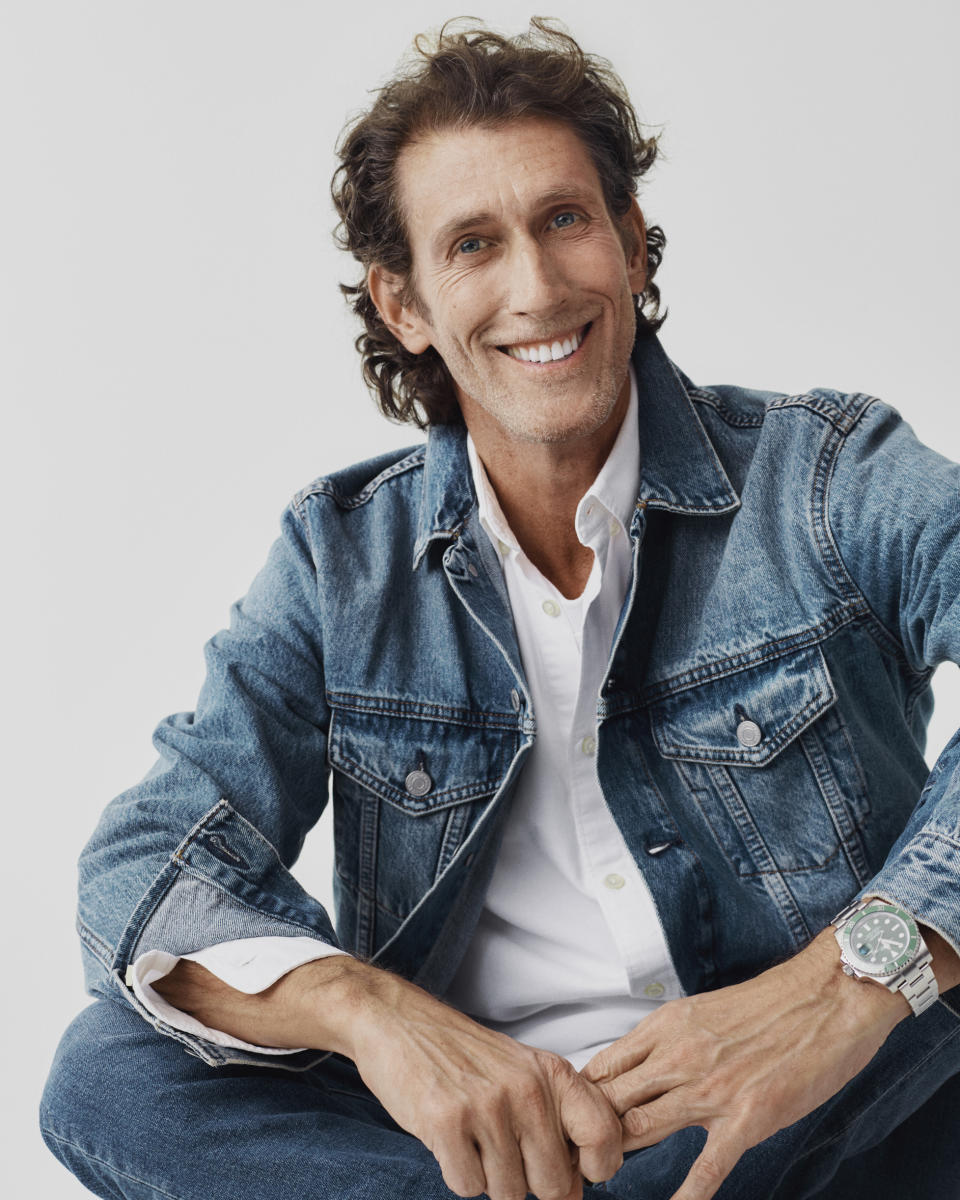Gap CEO Says Sustainability Requires Team Play

For a $15 billion company with four big brands, and a complexity of supply chain and omnichannel operations, the teams at Gap Inc. have to act as one so the retail conglomerate can meet its sustainability, environmental, social and business goals.
That was a main message from Richard Dickson, Gap Inc.’s president and chief executive officer, in his conversation with Daniel Fibiger, Gap Inc.’s head of global sustainability and president of Gap Foundation during WWD’s Sustainability Summit.
More from WWD
Neiman Marcus CEO Says the Company Is 'Ahead of Achieving' Sustainability Goals
Fashion Industry's Call to Action: Scale Up Sustainable Innovations for Global Impact
“We know that delivering impact and meeting our commitments related to climate, water workers rights, require new ways of integrating sustainability into our core business practices,” Dickson said. “Our company purpose, which we do talk a lot about, is to bridge gaps to create a better world, and our sustainability objectives cannot be realized by just one team. It takes integration with almost all the facets of the company. And I believe that we are on our way, but we have a lot more work to do.”

Last year marked the company’s 20th year of sustainability reporting and nearly three decades of sustainability programming. It was also when Gap Inc. and its partners launched three initiatives:
The Women + Water Collaborative, with the Water Resilience Coalition, WaterAid, Cargill and GSK, aiming to improve access to clean water and sanitation in India.
The Global Water Innovation Centre for Action, with supplier Arvind Ltd., to improve water quality and access.
Joined RISE (Reimagine Industry to Support Equality) to accelerate gender equity across the apparel supply chain, in collaboration with the BSR HER project supporting low income women working in the supply chain; CARE, the humanitarian aid agency, and Better Work, which strives to improve garment and footwear worker conditions.
“Sustainability efforts are not just the work of the sustainability department,” Dickson said. “We’ve worked incredibly hard to embed and integrate this work across all the moving parts of the business, our sourcing, product development, and finance, real estate and store teams, and then some.”
On the supply chain front, Dickson said cotton — the largest raw material sourced by Gap Inc. — is a “huge conversation….We have a goal to reach 100 percent more sustainable cotton by 2025, which includes better cotton, organic cotton and regenerative cotton. We’ve nearly reached that goal, and as a result, we have better visibility into where our cotton comes from. And we can more effectively mitigate certain risks that come from sourcing conventional cotton.”
Dickson also pointed out that sustainable cotton is “less energy-intensive,” he said. “Cotton is a crop that also requires a significant amount of water, which is why we also have institutionalized water-saving technologies throughout our supply chain. We’ve got extraordinary programs that we speak about but we’re going to speak a lot more about our ‘Washwell’ program that reduces the water used in garment dyeing and finishing by around 20 percent,” compared to conventional wash methods. (Gap’s Washwell program applies to denim and woven bottoms.)
“Since we launched it in 2016, the Washwell program has saved 4.9 billion liters. That’s equivalent to 2000 Olympic swimming pools of water, and it’s gaining awareness among our customers who we’re starting to share that narrative with.”
Gap partners with outside groups for help with sustainability initiatives, Dickson said.
“Most sustainability issues are way too complex for any of us to solve, a lot of the issues that we seek to address, from bridging the equity gap and empowering women workers in our supply chain to addressing complicated issues like the climate gap. These require very deep collaboration with peer companies, governments and NGOs. Bridging the gaps, if you will, between the many stakeholders involved, is critical to delivering impact in a more efficient and effective way.”
The water innovation hub in India, for example, “can be shared across the entire apparel supply chain,” Dickson said, including outside of Gap. “That effort was spearheaded by our sustainability team, working in tandem with our sourcing teams hand-in-hand, and also a key manufacturing partner. They worked in lockstep to create it, and ultimately worked together to ensure the technologies and the solutions from the innovation center can meet the needs of the business as well as recognizing the human right to access clean water.
“Gap Inc. also partnered with USAID [United States Agency for International Development] for many years to support women and communities touched by the apparel industry in India, empowering over 2.5 million people to improve their access to clean water and sanitation.
“With women overall as the drivers for change in their own communities, last year, we evolved the program to include other companies with supply chains in India,” Dickson said, citing Cargill, a company providing food, ingredients, agricultural solutions and industrial products to help nourish the world, and GSK, a British multinational pharmaceutical and biotech company.
On the hiring front, Dickson said Gap Inc. has “a hugely impactful partnership” with the Boys and Girls Club of America that aims to bridge the opportunity gap and get young workers into entry-level jobs at Gap Inc.-owned stores. At Old Navy, the two groups partnered to develop a gram called “This Way Onward” meant to boost confidence and job readiness, Dickson said.
“The program focuses specifically on serving Black and Latinx communities and provides mentorship, coaching, and on-the-job skill building. Old Navy is on track to hire around 20,000 entry-level associates through This Way Onward,” Dickson said. “None of these initiatives are purely altruistic. We know that finding alignment between sustainability efforts and our core business is an incredible unlock for us. That helps us future-proof our business. Each of these are win-wins for the company and the communities where we operate, leveraging sustainable strategies to solve core business needs.”
Best of WWD

 Yahoo Finance
Yahoo Finance 